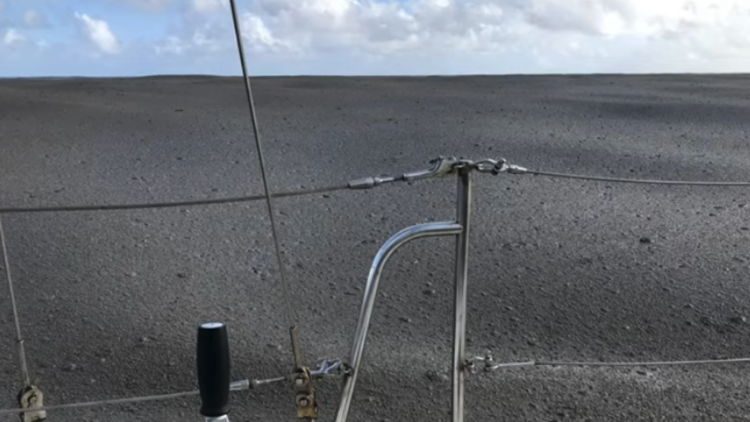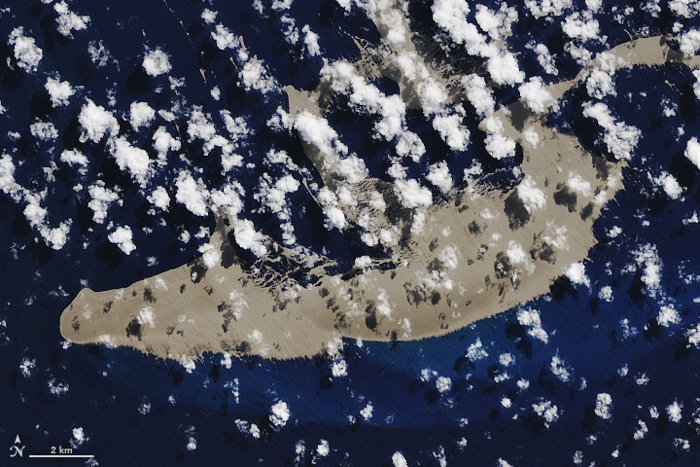An Australian couple sailing their catamaran towards Fiji, in the Pacific Ocean, encountered a 150-square-kilometer pumice raft drifting towards Australia.
Believed to have been produced by an underwater volcanic eruption near the island of Tonga, the pumice raft is over 20,000 football fields in size and several inches thick. Its existence was first reported on August 16, by a couple who encountered it while sailing towards Fiji. The vast expanse of floating volcanic rock slowed their catamaran to a speed of one knot and completely covered the ocean surface as far as the eye could see.

Photo: video screengrab
“We entered a total rock rubble slick made up of pumice stones from marble to basketball size,” Michael Hoult and Larissa Brill wrote on Facebook. “The waves were knocked back to almost calm and the boat was slowed to 1 knot. The rubble slick went as far as we could see in the moonlight and with our spotlight.”
The steering of the vessel reportedly became temporarily jammed by rocks between rudders and hull, but the couple somehow managed to clear the rubble and war other boats.
Another couple steering their yacht through the pumice raft described sound as “a cement mixer” and constant “grinding”.
“We sailed through a pumice field for 6–8 hours, much of the time there was no visible water,” sailor Shannon Lenz said. “It was like ploughing through a field. We figured the pumice was at least 6 inches thick.”

Pumice stone is a highly porous, lightweight volcanic rock, so even though the giant raft was a least six-inches-thick, it was very buoyant. But its most fascinating characteristic is that of temporary home for billions of marine organisms, like barnacles, crabs and snails. As it drifts towards the Australian coast, experts are hopeful that it will help revitalize the Great Barrier Reef.
“Based on past pumice raft events we have studied over the last 20 years, it’s going to bring new healthy corals and other reef dwellers to the Great Barrier Reef,” technology geologist Scott Bryan said. “It’s the right timing. So it will be able to pick up corals and other reef building organisms, and then bring them into the Great Barrier Reef.”






